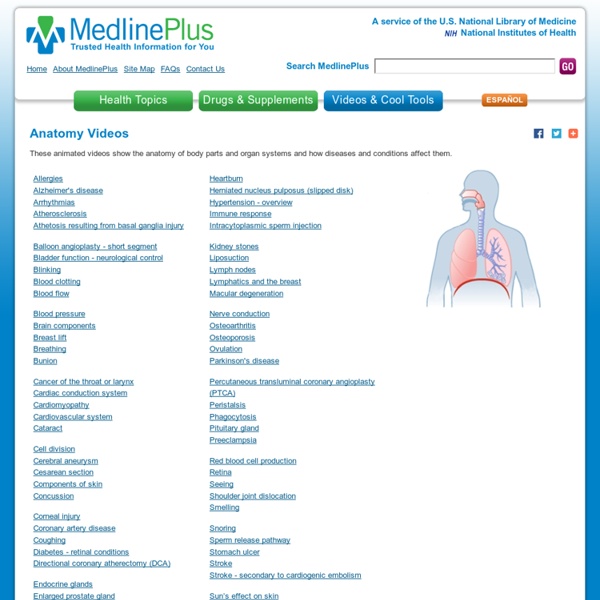Anatomy Videos: MedlinePlus
<span>To use the sharing features on this page, please enable JavaScript.</span> These animated videos show the anatomy of body parts and organ systems and how diseases and conditions affect them. The videos play in QuickTime format. If you do not have QuickTime, you will be prompted to obtain a free download of the software before you view a video. You can download the Apple QuickTime player at: The information provided herein should not be used during any medical emergency or for the diagnosis or treatment of any medical condition.
National Library of Medicine - National Institutes of Health
cursos.campusvirtualsp.org/?lang=es
student.bmj.com/student/student-bmj.html
iets.org.co
gpc.minsalud.gov.co/Pages/Default.aspx
webicina.com
Microblogging: Twitter and Friendfeed
Micro-blogging is the practice of sending brief text updates, photos, audio/video clips or links and make these public on a website and/or distributed to a private group of subscribers. These messages can be submitted by text messaging, instant messaging or e-mail. Many micro-blogs provide short commentary about medical news, medical specialties or a company's products and services. Webicina features two microblogging platforms including Twitter and Friendfeed. Twitter is a free social networking and micro-blogging service that allows its users to send and read other users' updates, which are text-based posts of up to 140 characters in length. In countries all around the world, people follow the sources most relevant to them and access information via Twitter as it happens—from breaking world news to updates from friends. AmericanMedicalNews American Medical News: The news and information source for physicians. Symposier Internal Medicine Internal Med News American College of Physicians Twellow
Related:
Related:



